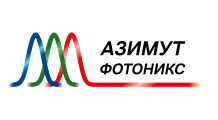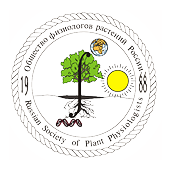Новости науки и практики // Сентябрь 2020

Control of the stomatal response to VPD in sunflower
Stomata close in response to increasing VPD (vapour pressure difference) but what is the mechanism responsible for this response?
https://www.botany.one/2020/08/control-of-the-stomatal-response-to-vpd-in-sunflower/
A new tool for discovering transcriptional regulators of co-expressed genes
TF DEACoN is an in silico “screen” to identify candidate transcription factors using a public database.
Researchers discover novel molecular mechanism that enables conifers to adapt to winter
Unlike broadleaf trees, conifers are evergreen and retain their photosynthesis structure throughout the year. Especially in late winter, the combination of freezing temperatures and high light intensity exposes the needles to oxidative damage that could lead to the destruction of molecules and cell structures that contribute to photosynthesis. Researchers have discovered a previously unknown mechanism that enables spruce trees to adapt to winter.
https://www.sciencedaily.com/releases/2020/08/200818103807.htm
Overexpression of the transcription factor GROWTH-REGULATING FACTOR5 improves transformation of dicot and monocot species
Kong et al. report that developmental genes encoding GROWTH-REGULATING FACTORS positively enhance regeneration and transformation in both monocot and dicot species. In sugar beet (Beta vulgaris ssp. vulgaris), ectopic expression of Arabidopsis GRF5 (AtGRF5) in callus cells accelerates shoot formation and dramatically increases transformation efficiency. More importantly, overexpression of AtGRF5 enables the production of stable transformants in recalcitrant sugar beet varieties. The introduction of AtGRF5 and GRF5 orthologs into canola (Brassica napus L.), soybean (Glycine max L.), and sunflower (Helianthus annuus L.) results in significant increases in genetic transformation of the explant tissue. A positive effect on proliferation of transgenic callus cells in canola was observed upon overexpression of GRF5 genes and AtGRF6 and AtGRF9. In soybean and sunflower, the overexpression of GRF5 genes seems to increase the proliferation of transformed cells, promoting transgenic shoot formation.
https://www.biorxiv.org/content/10.1101/2020.08.23.263947v1.full
The lncRNA APOLO interacts with the transcription factor WRKY42 to trigger root hair cell expansion in response to cold
Plant long noncoding RNAs (lncRNAs) have emerged as important regulators of chromatin dynamics, impacting on transcriptional programs leading to different developmental outputs. The lncRNA AUXIN REGULATED PROMOTER LOOP (APOLO) directly recognizes multiple independent loci across the Arabidopsis genome and modulates their three-dimensional chromatin conformation, leading to transcriptional shifts. Moison Sr. et al. show that APOLO recognizes the locus encoding the root hair (RH) master regulator ROOT HAIR DEFECTIVE 6 (RHD6) and controls RHD6 transcriptional activity leading to cold-enhanced RH elongation.
https://www.biorxiv.org/content/10.1101/2020.07.13.188763v2.full
A prion-like domain in ELF3 functions as a thermosensor in Arabidopsis
Temperature controls plant growth and development, and climate change has already altered the phenology of wild plants and crops. However, the mechanisms by which plants sense temperature are not well understood. The evening complex is a major signalling hub and a core component of the plant circadian clock. The evening complex acts as a temperature-responsive transcriptional repressor, providing rhythmicity and temperature responsiveness to growth through unknown mechanisms. The evening complex consists of EARLY FLOWERING 3 (ELF3), a large scaffold protein and key component of temperature sensing; ELF4, a small α-helical protein; and LUX ARRYTHMO (LUX), a DNA-binding protein required to recruit the evening complex to transcriptional targets. ELF3 contains a polyglutamine (polyQ) repeat, embedded within a predicted prion domain (PrD). Jung et al. find that the length of the polyQ repeat correlates with thermal responsiveness. They show that ELF3 proteins in plants from hotter climates, with no detectable PrD, are active at high temperatures, and lack thermal responsiveness.
https://www.nature.com/articles/s41586-020-2644-7
Scientists find how clock gene wakes up green algae
The findings could be applied to making green algae produce more lipids -- a possible source of biofuel.
https://www.eurekalert.org/pub_releases/2020-08/nu-sfh080420.php
A structural view of salicylic acid perception
Salicylic acid (SA) is a plant defence hormone required for both local and systemic immunity1. Upon pathogen infection, SA levels increase in infected and distal tissues, leading to the activation and amplification of defence responses. SA perception has been primarily studied in Arabidopsis thaliana.
https://www.nature.com/articles/s41477-020-0741-0
Structural basis of salicylic acid perception by Arabidopsis NPR proteins
Salicylic acid (SA) is a plant hormone that is critical for resistance to pathogens. The NPR proteins have previously been identified as SA receptors, although how they perceive SA and coordinate hormonal signalling remain unknown. Wang et al. report the mapping of the SA-binding core of Arabidopsis thaliana NPR4 and its ligand-bound crystal structure. The SA-binding core domain of NPR4 refolded with SA adopts an α-helical fold that completely buries SA in its hydrophobic core. The lack of a ligand-entry pathway suggests that SA binding involves a major conformational remodelling of the SA-binding core of NPR4, which they validated using hydrogen–deuterium-exchange mass spectrometry analysis of the full-length protein and through SA-induced disruption of interactions between NPR1 and NPR4. They show that, despite the two proteins sharing nearly identical hormone-binding residues, NPR1 displays minimal SA-binding activity compared to NPR4.
https://www.nature.com/articles/s41586-020-2596-y
A cross-kingdom conserved ER-phagy receptor maintains endoplasmic reticulum homeostasis during stress
Stephani et al. identify a cytosolic protein, C53, that is specifically recruited to autophagosomes during ER-stress, in both plant and mammalian cells. C53 interacts with ATG8 via a distinct binding epitope, featuring a shuffled ATG8 interacting motif (sAIM). C53 senses proteotoxic stress in the ER lumen by forming a tripartite receptor complex with the ER-associated ufmylation ligase UFL1 and its membrane adaptor DDRGK1. The C53/UFL1/DDRGK1 receptor complex is activated by stalled ribosomes and induces the degradation of internal or passenger proteins in the ER. Consistently, the C53 receptor complex and ufmylation mutants are highly susceptible to ER stress.
https://elifesciences.org/articles/58396
A molecular roadmap to the plant immune system
Bentham et al. provide a roadmap to plant immunity, with a focus on cell-surface and intracellular immune receptors. They describe how these receptors perceive signatures of pathogens and pests and initiate immune pathways. They merge existing concepts with new insights gained from recent breakthroughs on the structure and function of plant immune receptors, which have generated a shift in our understanding of cell-surface and intracellular immunity and the interplay between the two. Finally, they use our current understanding of the plant immunity as context to discuss the potential of engineering the plant immune system with the aim of bolstering plant defences against disease.
https://www.jbc.org/content/early/2020/08/17/jbc.REV120.010852.abstract
Engineering DNA nanostructures for siRNA delivery in plants
Zhang et al. have demonstrated that DNA nanostructures can be utilized as a cargo carrier for direct siRNA delivery and gene silencing in mature plants. The size, shape, compactness and stiffness of the DNA nanostructure affect both internalization into plant cells and subsequent gene silencing efficiency. They provide a detailed protocol that can be readily adopted with standard biology benchtop equipment to generate geometrically optimized DNA nanostructures for transgene-free and force-independent siRNA delivery and gene silencing in mature plants.
https://www.nature.com/articles/s41596-020-0370-0
Structural basis for VIPP1 oligomerization and maintenance of thylakoid membrane integrity
Vesicle-inducing protein in plastids (VIPP1) is essential for the biogenesis and maintenance of thylakoid membranes, which transform light into life. However, it is unknown how VIPP1 performs its vital membrane-shaping function. Kumar Gupta et al. use cryo-electron microscopy to determine structures of cyanobacterial VIPP1 rings, revealing how VIPP1 monomers flex and interweave to form basket-like assemblies of different symmetries.
https://www.biorxiv.org/content/10.1101/2020.08.11.243204v1
Stimulating photosynthetic processes increases productivity and water-use efficiency in the field
López-Calcagno et al. report on the introduction of the cyanobacterial bifunctional enzyme fructose-1,6-bisphosphatase/sedoheptulose-1,7-bisphosphatase or the overexpression of the plant enzyme sedoheptulose-1,7-bisphosphatase, together with the expression of the red algal protein cytochrome c6, and show that a further increase in biomass accumulation under both glasshouse and field conditions can be achieved. Furthermore, they provide evidence that the stimulation of both electron transport and RuBP regeneration can lead to enhanced intrinsic water-use efficiency under field conditions.
https://www.nature.com/articles/s41477-020-0740-1
Plant scientists study the interaction of heat stress responses in corn
The study shows how a response called the unfolded protein response helps to activate the heat shock response when corn plants are exposed to hot weather conditions. The two responses operate in different parts of plant cells, and scientists previously assumed the responses were independent. But data gathered using the Enviratron, a highly controlled and automated facility at Iowa State equipped with a robotic rover and growth chambers, allowed the research team to show how one response influences another.
https://www.eurekalert.org/pub_releases/2020-08/isu-pss082620.php
Antagonistic genes modify rice plant growth
A key driver of plant growth is a hormone called gibberellic acid. It activates cell division in the stem tissue, causing the stem to lengthen. Breeders know they can control plant height by stimulating or inhibiting gibberellic acid activity. However, exactly how this works has been unclear.
https://www.eurekalert.org/pub_releases/2020-08/nu-agm082420.php
Plant living with only one leaf reveals fundamental genetics of plant growth
Future possibilities include controlling size of crop leaves
https://www.eurekalert.org/pub_releases/2020-08/uot-plw082520.php
Spatially Restricted Immune Responses Allow for Root Meristematic Activity During Bacterial Colonisation
Plants circumscribe microbe-associated molecular pattern (MAMP)-triggered immune responses to weak points of the roots. This spatially restricted immunity was suggested to avoid constitutive responses to rhizosphere microbiota. To demonstrate its relevance, Emonet et al. combined cell-type specific expression of the plant flagellin receptor (FLS2) with fluorescent defence markers and mapped immune competency at cellular resolution. Their analysis distinguishes cell-autonomous and non-cell autonomous responses and reveals lignification to be tissue-independent, contrasting cell-type specific suberisation.
https://www.biorxiv.org/content/10.1101/2020.08.03.233817v1.full
Researchers at the University of Maryland discovers a new role for a well-known molecule as a plant hormone
In a new publication in Nature Communications, researchers show that ACC has a critical role in pollination and seed production by activating proteins similar to those involved in nervous system responses in humans and animals.
https://www.eurekalert.org/pub_releases/2020-08/uom-uda081320.php
New building block in plant wall construction
Researchers have uncovered a new biochemical mechanism fundamental to plant life. They have now detailed the enzymatic reaction involving carbohydrates present in plant cell walls, which are essential for their structure.
https://www.sciencedaily.com/releases/2020/08/200818094044.htm
Antagonistic genes modify rice plant growth
Rice stems lengthen when a newly identified gene activates during flooding. Another gene suppresses lengthening in shorter varieties. The insight could help plant breeders.
https://www.sciencedaily.com/releases/2020/08/200826083014.htm
New chromosome number and cyto-molecular characterization of the African Baobab ( Adansonia digitata L.) - “The Tree of Life”
The African baobab (Adansonia digitata L.), also referred to as the “Tree of Life”, is a majestic, long-lived and multipurpose tree of sub-Saharan Africa. Internationally, a growing demand for baobab products in the food, pharmaceutical and cosmetics industries has been observed. Considering this, there is a need for scientific information on the genetics and breeding of A. digitata, including cytogenetics, genetic diversity and reproductive biology. The objectives of Islam-Faridi et al.'s cytogenetic research were to determine the genome size, chromosome number, and organization of ribosomal DNA (45S and 5SrDNA) of A. digitata. Flow cytometry analysis revealed a 2C-DNA value of 3.8 ± 0.6 pg (1Cx monoploid genome size 919.1 ± 62.9 Mbp). Using their improved chromosome preparation technique, they were able to unequivocally count the chromosomes resulting in 2n = 4x = 168, a revised chromosome number for A. digitata.
https://www.nature.com/articles/s41598-020-68697-6
Introduction to Vascular Plant Structure
Something from teaching materials on plant anatomy, if you were looking for.
https://www.digitalatlasofancientlife.org/learn/embryophytes/tracheophytes/
Новости
Новости науки и практики // Июль 2024
Обзор научных новостей, опубликованных во всемирной паутине за последний месяцНовости науки и практики // Июнь 2024
Обзор научных новостей, опубликованных во всемирной паутине за последний месяцНовости науки и практики // Май 2024
Обзор научных новостей, опубликованных во всемирной паутине за последний месяц


Объявления
Записей не найдено.



